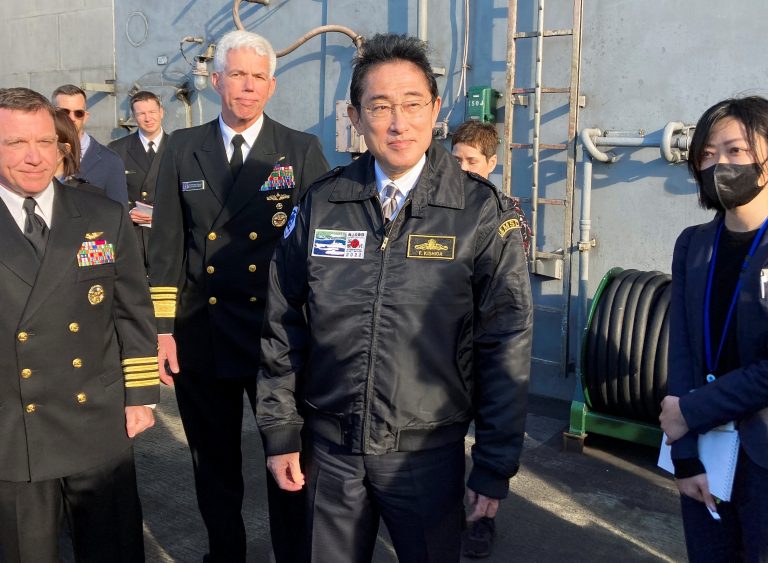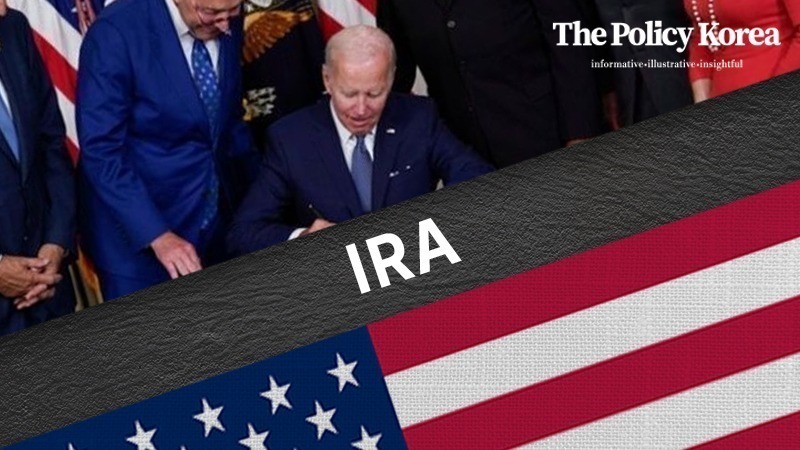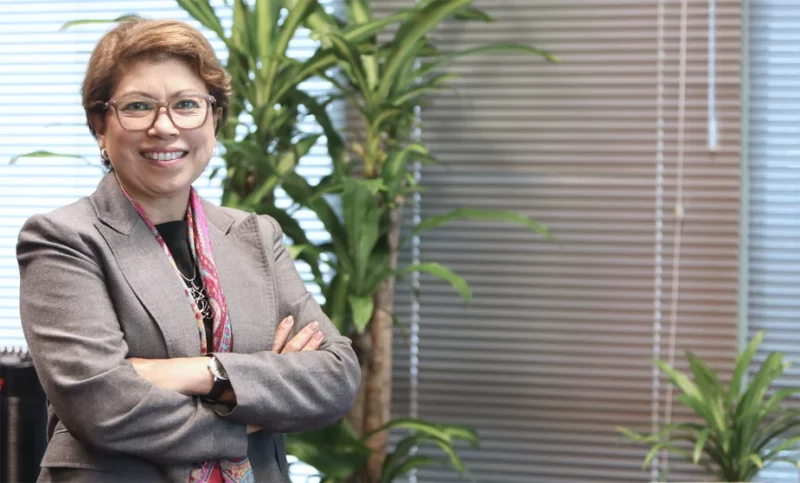[동아시아포럼] 새로운 대전략을 찾는 일본
지난 주 공개된 일본 최초의 우주 안보 청사진 기시다 후미오 총리 “국가 안보 관련 지출'(安保関連費) 2027년까지 GDP의 2% 수준까지 늘릴 것” 세계대전 전후로 이어져온 요시다 독트린의 퇴장 기미, 일본의 새로운 대전략은 중국 친화적?
[동아시아포럼]은 EAST ASIA FORUM에서 전하는 동아시아 정책 동향을 담았습니다. EAST ASIA FORUM은 오스트레일리아 국립대학교(Australia National University)의 크로퍼드 공공정책 학교(Crawford School of Public Policy) 산하의 공공정책과 관련된 정치, 경제, 비즈니스, 법률, 안보, 국제관계 및 사회에 대한 분석 및 연구를 위한 플랫폼입니다.
저희 폴리시코리아(The Policy Korea)와 영어 원문 공개 조건으로 콘텐츠 제휴가 진행 중입니다.
지난 주 일본은 국방 차원에서 우주를 더 잘 활용하기 위한 최초의 우주 안보 청사진을 채택했다. 이는 2022년 12월 기시다 후미오 총리 행정부가 ‘국가 안보 관련 지출'(安保関連費)을 2027년까지 GDP의 2% 수준까지 2배로 늘리고 대공방어 증진을 위해 토마호크 미사일에 투자하겠다고 밝힌 「국가안보전략国家安全保障戦略」・「국가방위전략国家防衛戦略」・「방위력 정비계획防衛力整備計画」의 3가지 안보 문서가 그 기반이다.
이에 국제 사회에서는 기시다 정부가 국방 전략을 빠르게 진행함에 따라 일본이 종전까지의 자제력을 잃고 현실적이고 전향적인 대전략을 수립하기 시작할 가능성에 대한 기대와 우려가 제기되고 있다.

일본의 역사적 제약에 대한 이해
전후 시대부터 현재까지 일본은 미일 안보 조약에 따른 미국의 안보 보장에 의존하면서 전시 및 식민주의적 범법 행위의 원죄로 인해 비교적 절제된 안보 태세를 유지해 왔다. 국제분쟁의 해결 수단으로서 무력 사용 및 교전권을 포기하도록 강제하는 ‘일본국 헌법 제9조 평화 조항’을 계속 유지하고 있으며, 표면상으로는 국방력을 방어 목적으로만 사용하도록 엄격히 제한하고 있다.
제2차 세계대전 직후, 일본의 군사적 축소는 당시 국제 정세에 따른 필연적인 결과였다. 미국이 이끄는 연합군은 일본이 다시 침략 전쟁을 일으키는 것을 방지하기 위해 일본에 민주화·비무장화 프로그램을 시행했다. 그러나 냉전 시기에는 일본이 재무장해야 한다는 국제적, 국내적 압력이 있었다. 국제적으로 미국은 일본을 포함한 동맹국들이 공산주의의 확산에 대응하기 위해 군사력을 강화하기를 원했다. 국내적으로는 집권 자민당 내에서도 보수적 민족주의 이념을 가진 세력들이 일본의 군사력 강화를 원했다.
이러한 압력에도 불구하고 일본 국민은 여전히 헌법 9조의 유지를 선호했는데, 이는 냉전과 공산주의의 위협에도 불구하고 일본이 군사적 자제를 유지하는 등 실질적인 재무장을 원하지 않는다는 것을 의미했다. 이는 경제적으로도 유의미한 선택이었다.
전후 일본은 제한된 자원을 경제 재건에 쏟았다. 연합군에 원자폭탄에 초토화된 히로시마와 나가사키뿐만 아니라 연합군의 전방위적 폭격은 66개 도시에 있던 인프라의 40%를 파괴한 것으로 추정되는 만큼, 재건에 필요한 작업량은 매우 방대했다.
요시다 독트린의 등장
이에 일본은 미국의 원조에 의존하는 동시에, 일본 자위대(SDF)를 통한 가벼운 재무장으로 군사력을 제한하며 경제 성장에 중점을 두는 전략을 채택했다. 이 전략은 요시다 시게루 총리의 이름을 따서 요시다 독트린으로 알려졌다. 요시다 독트린의 성공은 1967년 일본이 서독을 제치고 세계 2위의 경제 대국이 될 수 있었던 급속한 경제 성장에서 분명하게 드러난다.
1970년대 일본은 전후의 급속한 경제 성장에 힘입어 세계 최대의 경제대국 중 하나가 됐다. 하지만 일본의 탄탄한 경제와 아직 생생한 전쟁 트라우마의 결합은 새로운 문제를 야기했는데, 전쟁 당시의 일본을 기억하는 다른 국가들에게는 일본의 경제력이 군사력으로 이어질 수 있다는 우려가 팽배했기 때문이다. 다른 한편으로는 일본 스스로도 전쟁 중 겪은 충격적인 경험을 바탕으로 성장한 국력을 어떻게 책임감 있게 사용할지에 대한 고민이 있었다.
당시 일본은 경제 성장을 활용하는 동시에 2차 세계대전을 일으킨 군국주의로 회귀하지 않도록 하는 두 가지 주요 목표 사이에서 균형을 잡아야 하는 새로운 문제에 직면해 있었다. 이에 일본의 지도층은 당초의 주요 목표를 달성했음에도 불구하고 요시다 독트린과 미일 동맹을 유지하여 일본을 침략 전쟁으로 이끈 제국주의와 군국주의로 회귀할 계획이 없음을 분명히 하기로 결정했다. 군사 강국이 되지 않겠다는 이 약속은 1977년 후쿠다 독트린에 명시되어 있다.
탈냉전 이후의 변화와 새로운 대전략
냉전이 종식되면서 요시다 독트린과 미일 동맹의 미래에 대한 의문이 다시 제기됐다. 헌법 9조를 지키려는 국민들의 지지와 자위대의 전투 참여 기피에도 불구하고 중국의 부상과 대만 해협에 잠재된 위기, 북한의 핵 개발 등 다양한 불확실성 속에서 일본의 안보 개혁은 전후 헌법의 틀 안에서 점진적으로 이루어졌다. 그러나 일련의 점진적인 개혁은 시간이 지나며 미일 동맹 체제 내에서 자위대의 역할과 기능을 확대하는 중대한 변화를 낳았다.
이시하라 유스케가 이번 주 주요 기사에서 지적했듯이 ‘요시다 독트린’은 더 이상 일본의 대전략을 이해하는 데 적합하지 않다. 일본 경제의 침체로 역내 최대 경제대국으로서의 지위를 상실하면서 ‘일본 지도층’들의 가용한 군사적 옵션에 대한 상상력이 한껏 늘어났다. 동시에 일본의 광범위한 전략적 선택지에 대한 ‘일본 지도층’의 시야는 좁아졌다. 일본의 경제 성장 시기와 달리, 일본 집권당 의원 중 누구도 미일 동맹의 체제에서 벗어나는 것을 고려하지는 않는다. 하지만 일본이 요시다 독트린에서 점차 멀어지면서 일본의 새로운 대전력이 어떤 형태를 취할지는 여전히 불확실한 상항이다.
한편으로 일본과 미국은 일방적인 현상 변화를 막기 위해 동맹을 심화하고 협력, 조정 및 억제력을 강화하는 데 상호 이익을 공유하고 있다. 반면에 중국의 부상에 관해서는 이해관계가 첨예하게 엇갈린다. 중국의 국력 신장에 대한 미국의 관심은 글로벌 리더로서의 지위를 유지하려는 열망과 맞물려 있다. 미국은 중국의 성장을 힘의 역학 관계와 미국의 패권에 도전할 수 있는 지정학적 균형의 잠재적 변화라는 관점으로 바라본다.
반면에 일본은 두 가지를 고려해야 하는데, 첫째는 중국과의 지리적 근접성이다. 가까운 이웃으로서 중국의 분쟁이나 급격한 변화는 일본에 즉각적이고 중대한 영향을 미칠 수 있다. 둘째로 일본은 자유 무역 시장에 대한 이해관계를 더 고려할 필요가 있다. 수출 중심 경제인 일본은 이러한 시장으로부터 혜택을 받고 있다. 그러나 중국과 같은 주요 경제국과 관련된 긴장이나 갈등은 이러한 개방형 자유 무역 시장의 걸림돌이다.
이러한 고려 사항 때문에 일본은 중국과의 관계를 “좀 더 연구하는 방식”으로 처리하는 것을 선호한다. 즉, 공격적이거나 성급한 전술에 의존하기보다는 상황을 세심하게 연구하고 긴장을 섬세하게 관리하기 위해 보다 신중하고 사려 깊은 접근 방식을 취하고자 한다. 이시하라가 설명했듯이, 도쿄는 “긴밀한 동맹국으로서 워싱턴의 민주주의 대 독재 서사에 대해 우려를 표명하고 미국 주도의 인도-태평양 경제 체제에 대한 유보적인 입장”을 표명해 왔다. 일본의 새로운 대전략은 두 번째 길, 좀 더 신중하고 외교적인 해법을 포용해야 하는데, 이는 정책 지도부가 아직 계획하지 못한 길이다.
Japan searches for a new grand strategy
Last week Japan adopted its first ever space security blueprint aimed at better using space for defensive purposes. This builds on the three new security documents released by Prime Minister Fumio Kishida’s administration in December 2022, in which it committed to doubling defence spending to 2 per cent of GDP by 2027 and investing in Tomahawk missiles to develop missile counter-strike capabilities.
As the Kishida government has rapidly progressed the country’s security reforms, there are expectations and fears that Japan may be seeking to cast off its previous self-restraint and start formulating a realist, more forward-leaning grand strategy.
Throughout the post-war era to the present day, Japan has continued to maintain a relatively restrained security posture out of recognition of its wartime and colonial transgressions, while relying on the US security guarantee under the US–Japan Security Treaty. It continues to maintain the Article 9 peace clause of its constitution renouncing the use of force as a means of settling disputes and ostensibly limits its defence capabilities to equipment that serves strictly defensive purposes.
In the immediate aftermath of the Second World War, Japan’s military self-restraint was born out of the necessity of its situation. The US-led Allied Powers implemented a program of democratisation and demilitarisation to prevent Japan from ever waging a war of aggression again. Japanese public opinion favoured the maintenance of Article 9 despite the emergence of Cold War pressures, both internationally from the United States and domestically from conservative nationalist factions within the ruling Liberal Democratic Party, for Japan to undertake more substantial rearmament in the fight against communism.
The devastation of the war meant that Japan sought to focus its limited resources on rebuilding its economy. The necessary rebuilding was vast. In addition to the atomic bombing of Hiroshima and Nagasaki, the Allied firebombing campaign across Japan destroyed, by one estimate, 40 per cent of infrastructure across 66 target cities.
The strategy of reliance on the United States, limiting its military posture to light re-armament through the establishment of the Japan Self-Defense Forces (SDF), and focusing on economic growth came to be known as the Yoshida Doctrine after the then prime minister Shigeru Yoshida. It was a great success as Yoshida’s proteges helped Japan realise its rapid economic growth, which saw Japan overtake West Germany to become the second largest economy in the free world in 1967.
In the 1970s, Japan’s economic heft, coupled with still fresh memories of the war, posed a new problem. Despite achieving its principal original goal, Japanese leaders decided to maintain the Yoshida Doctrine and the US–Japan alliance to reassure the region that it had no plans to return to the imperialism and militarism that led it down the path of aggressive war. This promise not to become a great military power was enunciated in the Fukuda Doctrine in 1977.
The end of the Cold War once again opened questions about the future of the Yoshida Doctrine and the US–Japan alliance. Uncertainty surrounding the rise of China, the possibility of a crisis across the Taiwan Strait and North Korea’s missile and nuclear weapons development, as well as continued public support for the maintenance of Article 9 and avoiding SDF entanglement in combat missions, meant that Japanese security reforms were incremental and positioned within the framework of the post-war constitution. But the series of incremental reforms have, over time, amounted to significant changes expanding the roles and functions of the SDF within the US–Japan alliance framework.
As Yusuke Ishihara explains in this week’s lead article, ‘the Yoshida Doctrine is no longer fit to understand Japan’s grand strategy’. As Japan’s economy has stagnated and as it is no longer the biggest economy in the region, ‘Japanese leaders’ imagination about their available military options has stretched’. At the same time, ‘Japanese leaders’ imagination about Japan’s broader strategic options has shrunk. Unlike during Japan’s economic ascent, no members of the Japanese governing party are entertaining departing from the defence treaty with the United States’.
As Japan gradually moves away from the Yoshida Doctrine, it is unclear what shape Japan’s new emergent grand strategy will take. On the one hand, Japan and the United States maintain a shared interest in deepening the alliance and increasing their cooperation, coordination and deterrence power to prevent unilateral changes to the status quo.
On the other hand, when it comes to the question of managing the rise of China, their interests diverge quite sharply. While the US is focused on the rise of China from the perspective of maintaining its global and regional primacy, Japan’s geographic proximity to China and its stake in an open global economy mean it would like to manage tensions in a more studious way. As Ishihara explains, ‘as a close ally, Tokyo has also been voicing its concerns about Washington’s democracy-versus-autocracy narrative and signalling its reservations about the US-led Indo-Pacific Economic Framework’.
Japan’s new grand strategy has to embrace that second path, and it’s a path the policy leadership is yet to map.



























